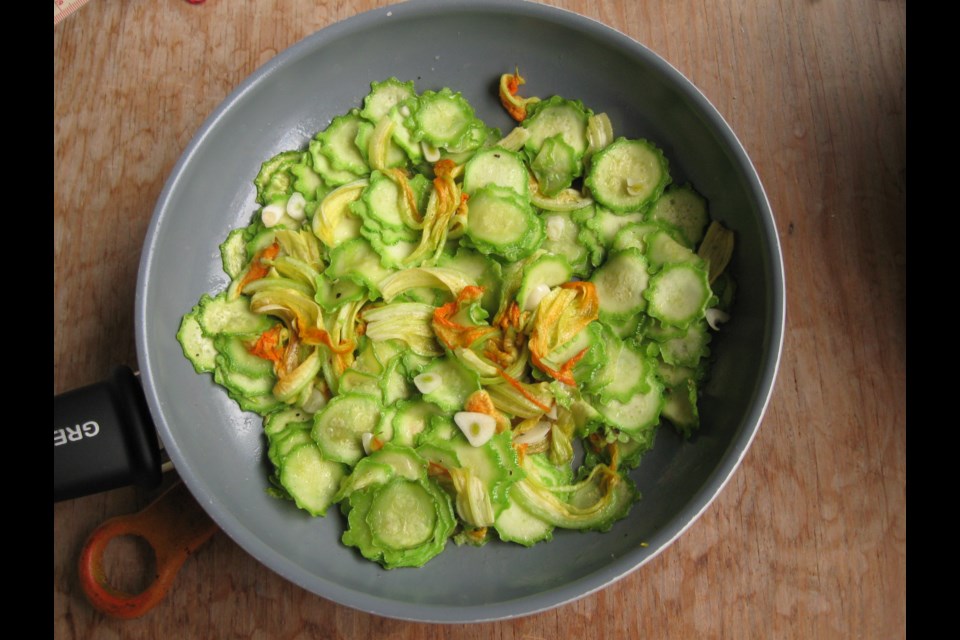My heart sinks each time I go to the green grocer and see what they offer in the way of zucchini.
There seem to be two main varieties available here — dark green and light green, and both look distinctly unappetising.
No wonder people don’t appreciate them, in spite of the fact that they’re low in calories and a good source of potassium, magnesium and fibre, not to mention Vitamins A, B-6 and C.
Poor zucchini —they deserve a major publicity campaign. Centuries ago, the summer squash we call zucchini was brought from America to Italy, where every region has its own variety.
North Americans tend to let zucchini grow too large and to store them for too long. By then, they’ve developed a sponge-like texture and taste of nothing in particular.
People end up using them in soups or in baking, where other ingredients provide flavour.
My zucchini epiphany happened many years ago in Florence, Italy. I was at the outdoor market buying vegetables when I came across a wooden table covered with zucchini unlike any I’d seen before.
They still had their flowers attached, and the freshness of the flowers revealed they’d been picked only a few hours earlier. The zucchini were a variety known as Florentine — pale green with speckles, small in size, and ribbed instead of smooth. Their flesh is very firm and the flavour pleasantly nutty.
Italians have as many different ways of preparing zucchini as there are cooks, but all ways are simple and fast, using salt, pepper and olive oil, and sometimes adding garlic, parsley, mint or fennel.
My favourite is to sauté zucchini cut into chunks or sliced thinly on a mandolin. The flower, torn into strips, makes an eye-catching addition.
Zucchini are excellent grilled. Slice them lengthwise into thin strips, grill them briefly, then marinade them for a few hours in olive oil, salt, pepper, garlic and parsley.
Zucchini, fresh ricotta and a little fresh mint make an unforgettable summer pasta — sauté zucchini, cook pasta and add to zucchini with a bit of pasta water, spoon in some ricotta, toss well, and throw in a leaf of mint.
If by chance your zucchini is enormous, don’t worry. Cut it into thick slices, dip them in flour, beaten egg and bread crumbs, and fry them as if they were schnitzel.
On the Adriatic side of Italy, the peasants used overgrown zucchini for a dish called “teglia” — in a deep, ovenproof dish, well oiled, place alternating layers of sliced potatoes, onion, zucchini and tomato, with salt, pepper, olive oil and fennel leaves between each layer.
Bake at medium heat (about 150 Centigrade) for about 40 minutes or until potatoes are cooked and all liquid has evaporated. “Teglia” is good warm or cold.
You won’t find Florentine zucchini at the markets here, though if you have a garden, you can order seeds from Seeds from Italy online at GrowItalian.com/Zucchini-Lunga-Fiorentino-146-52/) and grow your own.
Beware that Florentine zucchini need space. They don’t like containers, but a raised garden bed is fine.
Sabine Eiche is a writer and art historian


.jpg;w=120;h=80;mode=crop)
